RegenOx Treats #2 Fuel Oil Plume Beneath Residential Home
CASE SUMMARY
Home Heating Oil, New Jersey
A 550-gallon leaking underground storage tank (UST) containing #2 fuel oil was removed from a single family residence in New Jersey (Figure 1). In addition, the surrounding soil was excavated and sampling was performed to determine the extent of the petroleum hydrocarbon plume within soil and groundwater. The plume was delineated at approximately 1,800 ft2 with
concentrations of total petroleum hydrocarbons as high as 40,000 parts per million (ppm) in soil and approximately 40,000 parts per billion (ppb) in groundwater. An estimated 20% of the plume was determined to be located beneath the home itself, eliminating the option for extensive soil excavation. Other remedial strategies such as pump & treat, monitored natural attenuation, and enhanced fluid recovery were ruled out as they did not provide a timely, cost-effective solution.
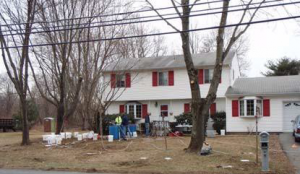
Figure 1. Residential Site
- Soil Type: Fine to Medium Sands
- Treatment Thickness: 5 to 12 feet bgs
- Free Product: 1” to 3” observed
- Contaminants of Concern:
- TPH – Total Petroleum Hydrocarbons
- TVOC – Total Volatile Organic Carbon
- TSVOC – Total Semi-Volatile Organic Carbon
| Contaminant | Concentration |
| TPH – soil | 40,000 ppm |
| TVOC – gw | 7,900 ppb |
| TSVOC – gw | 40,000 ppb |
REMEDIATION TECHNOLOGY
In Situ chemical oxidation (ISCO) using RegenOxTM was chosen as the most appropriate technology to treat the soil and groundwater plume. In addition, an application of a slow-release oxygen compound, ORC Advanced®, was applied following RegenOx to stimulate aerobic biodegradation of any residual contaminants. RegenOx was applied based on the following:
- Least disruptive to the homeowner
- Successful track record
- Feasible site conditions – sandy soils and a shallow water table paired well with direct-push injection
- Low natural organic carbon in saturated zone
- Safe to use and easy to apply
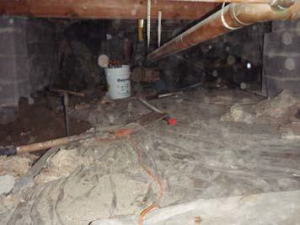
Ten permanent injection points were installed around the source area, at the edge of the plume and beneath the house in the crawl space as seen in Figure 2. During the installation, free phase product was observed in monitoring wells at approximately 1 to 3 inches. The NJDEP’s Permit-by- Rule prohibited the injection of any remediation technology should free product be present. Once the removal was complete, RegenOx could be applied as designed.
CONTAMINANT PLUME TREATMENT
Free Product Removal
The free product was removed using a mild surfactant and a high powered vacuum extraction truck within the source area. This process also effectively distributed the surfactant across the impacted zone for further desorption of contaminants from the soil matrix. Three free product recovery events were performed which effectively removed all free product from the wells and surrounding areas. TVOC concentrations in groundwater dropped only slightly as a result of the free product removal. However, concentrations of TSVOCs more than doubled in groundwater as a result of desorption from soil.
ISCO Injection for TPH Reduction
The application design included two RegenOx injection events and a third combined RegenOx and ORC Advanced injection for on-going biostimulation to treat residual contaminants. Using temporary and permanent injection points, a total of 6,210 pounds of RegenOx was applied from 5 to 11 feet bgs. The third injection included 650 pounds of ORC Advanced.
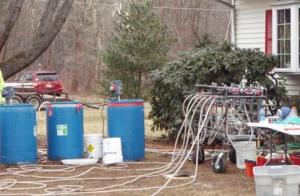
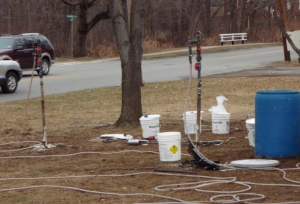
Conclusion
No free product, sheen or film was observed after the injections were completed (Figure 5). Levels of dissolved oxygen 30 days following the final application were measured at approximately 10-20 ppm indicating the presence of ORC Advanced in the subsurface.
Within 6 months, significant reductions in petroleum hydrocarbons were observed. TVOCs declined from 7,900 to <50 ppb and TSVOCs were reduced from 40,000 to <150 ppb. Further Action status from the NJDEP. The site is currently seeking No Further Action status from the NJDEP.
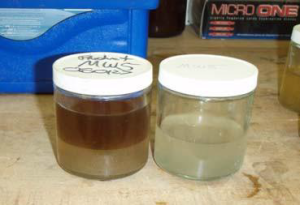

 Americas
Americas Europe
Europe Français
Français Deutsch
Deutsch Italiano
Italiano Español
Español
